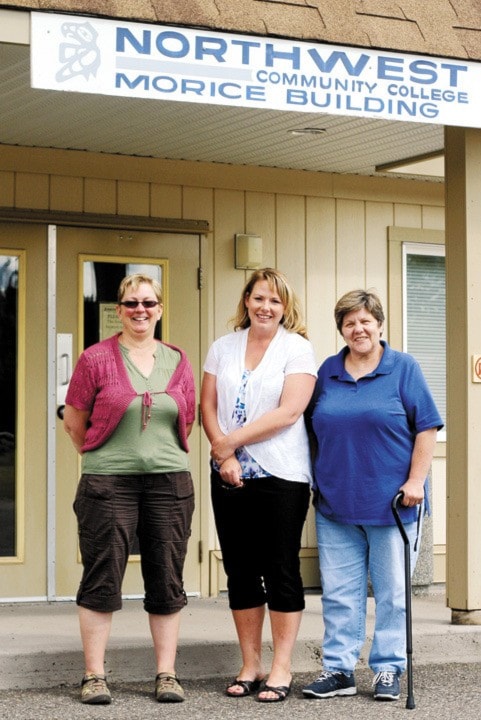High school students who struggle with big classes or a fixed schedule can find a smaller, more flexible place to study in Houston this year.
Houston Secondary Principal Scott Jackson says that while HSS has offered an alternate school program for more than a decade, it previously ran as a set of special classes held at the school campus that had to follow a fixed timetable.
But starting in September, alternate school students age 16 and older will be able to study on their own time in a centre hosted at Houston’s Northwest Community College.
“Instead of the students being fixed into our timetable, the centre is open between 8:30 a.m. and 12:30 p.m. every day,” Jackson said.
“One of the pitfalls for these kids was that if they missed a few days, the class had moved on and they had to do catch-up,” he explained.
“The alternate school is more self-paced.”
Jackson said 21 students have already signed up for the new alternate program, including several who didn’t attend school at all last year.
“They’ve said that they’d like to come up and try school again because this is a model that appeals to them,” he said. “That’s huge for us.”
Regina Saimoto, campus principal at NWCC, says the idea for the new alternate program rose out of informal meetings between teachers, college instructors and youth workers with Houston’s Youth Empowerment Program (YEP).
“That’s how good things happen—you collaborate and find common ground,” Saimoto said.
“We were all very keen to see something like this.”
Houston Secondary teacher Pat Cox will oversee the new program, but she won’t be the only one teaching.
NWCC instructor Sandy Lavallie and Houston YEP coordinator Amy Sketchley will also teach morning classes.
Students can also drop by for tutoring, including nights when Lavallie is already teaching NWCC college courses.
Cox says the alternate program is less rule-bound than a typical high school—students can get up for a coffee when they like, wear a hat in class, and schedule classes to fit their own work or personal needs.
For some students, Cox said doing away with such a rigid format can mean the difference between dropping out and staying in school.
And with that extra freedom, Cox says it’s easier for students to pick up one of high school’s big lessons—that students are in it for themselves.
“They can see the value, all of a sudden, in finishing that course and getting that mark,” she said.
“It’s allowing them to have ownership of their own learning, and their own goals, and their own steps forward.”
Lavaliie agrees.
“That’s why we’re excited about it,” she said.
“It’s very learner-centred, and the program will be meaningful for each person.”
Lavallie said YEP has been instrumental in starting the program, recalling how even last year, with Sketchley’s help, one student who was at risk of dropping out, finished a high-school diploma at the college and is now entering a strong career in trades.
Involving YEP is just one way that the alternate school is making links in the wider community, Lavallie said.
Tony Mondia, a director at Nadina Community Futures, will teach a business workshop at the school this year.
As the school becomes more established, Cox said it will be easier run joint activities with other community groups, such as the Houston Friendship Centre.
“It suddenly becomes a resource place for other agencies,” she said.
And since the students enrol at both the alternate school and HSS, students who want to can still sign up for HSS sports teams and elective classes like band, theatre or the HSS hockey school.
Alternate school can also take one or two regular classes at HSS if they like, or take all their classes at the college campus and graduate with a B.C. Dogwood diploma.
Speaking as a long-time educator and veteran of many long planning sessions, Lavallie said everyone involved in setting up the new alternate school this summer was uniquely engaged.
“Everybody was behind it,” she said.
“This was one of the meetings where people were really excited that we were doing something for the youth of our community.”
